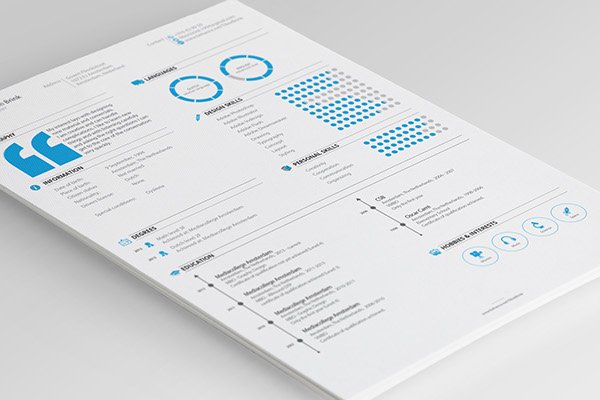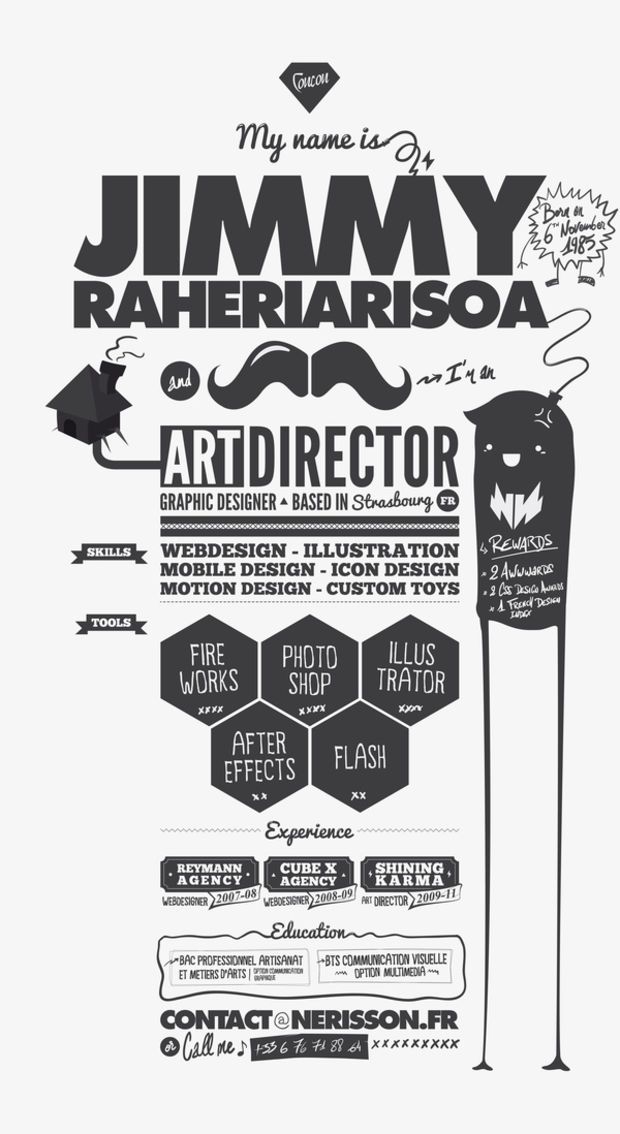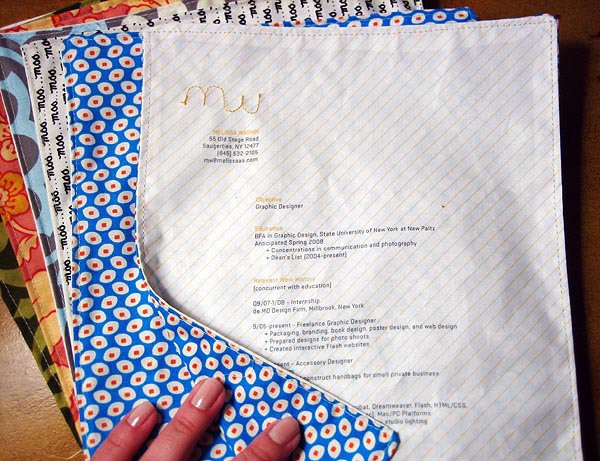No matter what industry you work in, putting together a résumé is intimidating. It’s a challenge to stare at the blank page and wonder how you’ll fit your life on there – or if you have enough experience to list! (You do.) Then once you figure out which skills to focus on, there’s the added pressure of putting your personality into the document.
Search around for examples that go beyond the traditional template, and you’ll find highly original résumés created by graphic designers. Don’t let innovative designers intimidate you into giving up on having a stylish résumé to call your own. The good news is you don’t need to be an InDesign wizard to have a résumé that stands out in a pile.
Instead of worrying about what the hiring manager will want to see, start with your personal style as a launching pad for how to market yourself on a single piece of paper. Adapt one or more of the following methods as needed to create a résumé that’s as dapper as you are.
 via Behance
via Behance
Feature Signature Colors
The main body text should always be black, but accent colors can be placed in the section headers, bullet points, or dividers. Don’t feel pressured here to stick with safe colors like navy and hunter green. Go with your gut – or your closet, rather. When you’re shopping for new threads, which colors do you gravitate to in the store? Another way to find your signature color is to go through your wardrobe. Rifle through your tie collection, for example, and pick the one that makes you the most confident when you wear it.
Choose Traditional Typesetting
If there’s one rule to résumés, it’s never to use common fonts like Arial, Times New Roman, or Verdana. Nothing says dapper like traditionally gentlemanly typesetting. There are a lot of ways to go old-school with fonts, and this is a great opportunity to display your personality. Something Art Deco will look sleek and modern, like Ironick NF. The look of serifs, which are the hooks at the ends of the letters, is a good guarantee of a classic feel. Search for “free serif fonts,” or look for that style in the font selection available to you.
Fresh Layout
No matter how you style your résumé – traditional, contemporary, or a fusion of the two – it’s of utmost importance to make sure the reader can read. This speaks to Coco Chanel’s famous advice for constructing an outfit: “Before you leave the house, look in the mirror and take one thing off.” That is to say what’s not on your résumé is as noticeable as what is, and it’s not doing anybody any favors to crowd the page with too much information. Leave a little “soothing white space,” as one of my résumé clients called it.
Add Dapper Graphic Elements
Use your creativity to integrate your favorite aspects of dapper style. For example, use a bow tie to divide sections, or use them as a replacement for bullet points. It’s as easy as Googling “bow tie clip art” and finding something that you’d don. You can also search the ’net for an icon to use in your header, like a “D” wearing a top hat.
 via Ultra Linx
via Ultra Linx
Use Your Headshot
Depending on your industry, it can be cool to literally put yourself right in your résumé. Then your dapper pride is on full display, and hiring managers can see you mean business. Not only will you get to display your detail-oriented dapper style, but a picture makes a powerful impact. Marketers use images in this way to create personal connections all the time. Who could forget the iconic Rosie the Riveter posters, or ignore the impulse to buy a magazine when you see your favorite celeb on the cover?

Craft Your Résumé from Clothes
Incorporate classic textile patterns like houndstooth, pinstripe, or whatever you can find in the bin of fabric scraps at the craft store. How? Check out this unique idea for handsewn résumés by Melissa Makes Things. This might also be a great way to recycle the fabric from your favorite dress shirts or pants once they’re too worn to wear.
Own Your Name
No matter what name you prefer, it belongs on your résumé. Even if you are applying to a straight-laced workplace, that doesn’t mean you can’t express your nickname. But realistically, in the Data Age, it’s better to have a name you love and be consistent in how you’re identified. When in doubt, repeat to yourself: a résumé is not a legal document, a résumé is not a legal document.
You’ll do great out there in the job market! It’s a dangerous myth to believe that everyone lies on their résumé. Stay true to yourself, and you’ll be more likely to find a job that’s going to help you grow into the career that truly suits your skill set and personality.


 via
via 


